Left vs Right pelvic tilt | Lateral Pelvic Tilt
Introduction
Our bodies aren’t all perfectly symmetrical and everyone has some asymmetry to some degree due to how we hold and use our bodies throughout our lives. This asymmetry is expected and perfectly normal.
However, there can be times where a little too much asymmetry, such as in the case of a lateral pelvic tilt, can leave us more prone to injury, reduce mobility and negatively affect our overall physical performance.
In order to understand how improper posture contributes to a lateral pelvic tilt, it’s important to consider how the pelvis is structured.
The pelvic bone sits at the top of the thigh bones (femurs) and is supported by a network of muscles that help stabilize the hips and allow for a full range of movement of the legs.
These muscles and ligaments include:
- Adductors
- Gluteus medius
- Obliques
- Quadratus lumborum (QL)
- Tensor fascia lata (TFL)
- When a muscle imbalance occurs between these muscles, whether due to injury, tightness, weakness or overuse, a lateral pelvic tilt may develop.
Definition:
Left pelvic tilt : Left pelvic tilt is when the right side of the pelvis is elevated higher than the left side.
Right pelvic tilt : Right pelvic tilt is when the left side of the pelvis is elevated higher than the right side.
What is a Lateral Pelvic Tilt?
It is the asymmetric positioning of the pelvis where:
one waist height is higher than the other side. (Hip hike)
or one waist height is lower than the other side. (Hip drop)
It is also known as having uneven hips.
There are several known causes of a lateral pelvic tilt, including scoliosis and leg length discrepancy, but one of the most common culprits of this postural discrepancy is poor posture.

Specifically, a lateral pelvic tilt is the result of the tightening and shortening of the adductors, gluteus medius, and quadratus lumborum on one side of the body, and the simultaneous weakening and lengthening of the same muscles on the opposite side of the body.
Symptoms of Lateral Pelvic tilt:
- Tight muscles in the pelvic and thigh areas.
- Weak gluteus maximus and stomach muscles.
- Poor posture with the lower spine curving in, and a protruding stomach.
- Uneven Hips & Gait : The most obvious symptom of a lateral pelvic tilt is having an uneven walk or gait due to one hip dropping lower than the other.
- Uneven Shoulder Heights : The hip which is higher will usually result in the shoulder on the same side, being lower than the other side.
- Apparent Leg Length Discrepancies : A lateral pelvic tilt is often confused with another condition known as leg length discrepancy. Someone with a lateral pelvic tilt may think they have one leg longer than the other, or one leg shorter than the other.
- Internal Rotation of the Leg : The bones of the leg usually rotate internally as a result of a lateral pelvic tilt. What’s not to be ruled out is that the internal rotation of the leg could also be the cause of the lateral pelvic tilt, rather than the result. If it is the cause, then the problem starts all the way down at the foot. Typically, one foot will be pronated where the ankle is rolled inward, this could be a flat foot or a collapsed arch. When one foot becomes pronated, the shin bones and the femur rotate inward and the hip will drop.
- Other Symptoms : While mild to moderate cases of left or right pelvic tilt usually do not produce any noticeable symptoms, severe or longstanding cases of left or right pelvic tilt may cause muscle tightness and low back pain.
- If left untreated, a lateral pelvic tilt may lead to more serious medical conditions, such as: Disc degeneration – lateral pelvic tilt may cause disc degeneration due to the distortion of the lumbothoracic spine. One study found that individuals with a high degree of pelvic tilt also had a higher incidence of disc degeneration within the L4 to L5 segment of the lumbar spine, regardless of age or gender.
- Sacroiliac joint pain – Lateral pelvic tilt can lead to an asymmetrical positioning of the sacrum in relation to the ilia, or “wings”, of the pelvic girdle. This asymmetry may result in sacroiliac joint pain.
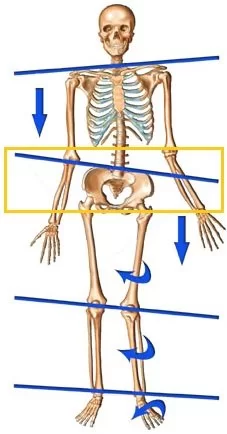
Diagnosis:
How Do I Know If I Have Uneven Hips?
a) Whilst standing: (Static)
Instructions:
Stand in front of a mirror.
Place your hands on the highest point of your waist line.
Keep your hands flat to the floor.
Compare the level of your hands.
Results: If one side is higher as compared to the other side, then you have a Lateral pelvic tilt.
Note: Look out for a prominent waist crease! This is usually observed on the side of hip hike.
b) Whilst moving: (Dynamic)
Instructions:
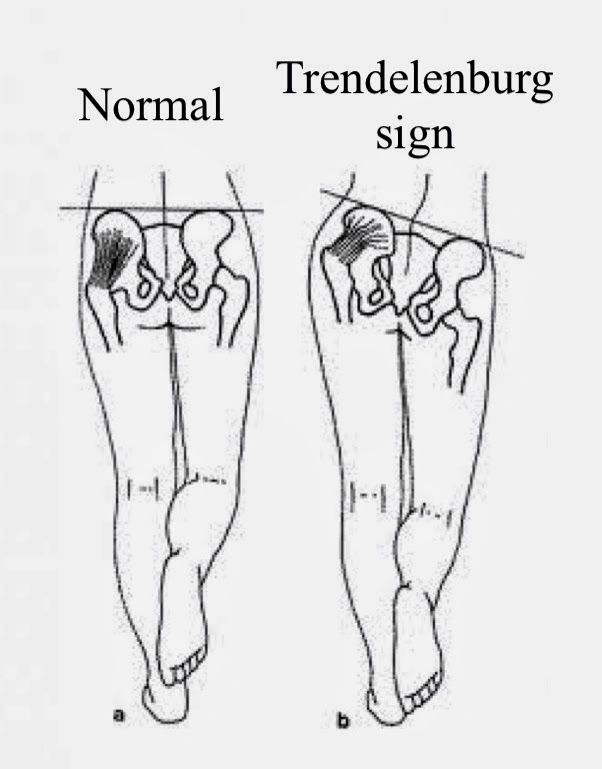
Stand in front of a mirror.
Place your hands on the highest point of your waist line.
Stand on one leg for 10 seconds.
Perform a single leg squat.
Observe for any tilt in the pelvis throughout test.
Is there a change in waist height?
Compare both sides.
Results: If your pelvis tilts, this may suggest that you have weakness +/- lack of control of the glute medius muscle on the side of hip hike.
Causes Of A Left and Right Pelvic Tilt
Bad Posture Habits
If you hold your body in the same positions for hours each day, every day, for several months or years, your body’s tissues will adapt to this position.
Therefore if you constantly hold your body with one hip hiked up, your body may adapt to that position.
Lateral pelvic tilts caused by major structural disorders, such as structural scoliosis, are much more difficult to treat.
Traditional treatment of lateral pelvic tilts that are functional disorders and caused by muscular tightness usually involves physical therapy, stretching, and in some cases muscle relaxants.
Sitting Too Much with Incorrect Posture
A lateral pelvic tilt is frequently seen in individuals who practice poor posture when sitting for long periods of time.
Prolonged sitting not only places undue stress on the spinal column, but it also changes how the muscles and ligaments of the lower body (specifically, those that support the pelvis) interact.
If not corrected, this muscle imbalance can lead to a negative feedback loop of injury, overcompensation, and re-injury of the muscles and ligaments that stabilize and mobilize the pelvis.
Muscular imbalances: (Sagittal plane)
A Lateral pelvic tilt can result from an imbalance between the Quadratus Lumborum, Adductors and Glute medius muscle.
Other muscles involved: Obliques, Tensor fascia latae
The pelvis will HIP HIKE to the side of relative weak glute medius, tight quadratus lumborum and tight adductors.
The pelvis will HIP DROP to the side of relative tight glute medius, weak quadratus lumborum and weak/elongated adductors.
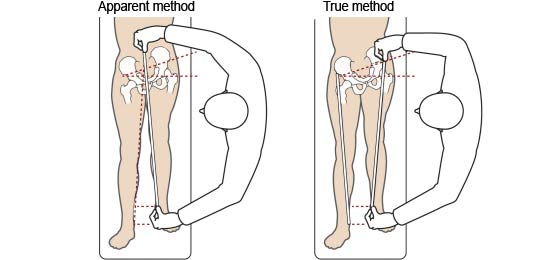
Having one leg that is structurally longer than the other side will result in a lateral pelvic tilt.
The side of the longer leg will generally have a higher hip.
How to measure the length of your legs:
Lie on your back.
Measure the distance from the ASIS to the Medial Malleolus.
Do both sides.
Results: If these lengths are significantly different between the legs, then you may have a leg length discrepancy.
Neurological conditions
Any condition that impacts the nerves that supply the control of the pelvic musculature may result in a laterally tilted pelvis.
The superior gluteal nerve supplies the glute medius.
Treatment of Left or Right pelvic tilt:
Treatment of Left or Right pelvic tilt with different specialists. such as :
Chiropractic care
Chiropractors take a holistic approach to correcting a lateral pelvic tilt in order to treat pain and restore a full range of motion to the muscles, ligaments, and joints surrounding the pelvis.
A chiropractic treatment plan may include chiropractic adjustment, massage therapy, physical therapy, and stretching.
The goal of chiropractic treatment is to bring the body into better balance without the use of medications or injections.
Physical therapy
Not only can a physical therapist suggest muscle strengthening and stretching exercises that can be done at home to alleviate the discomfort associated with a lateral pelvic tilt, but he or she will also offer advice about managing your condition through lifestyle changes.
The goal of physical therapy is to restore symmetry to the pelvic girdle by strengthening weak and/or elongated muscles while stretching tight, constricted muscles.
Massage
A massage therapist will use a number of manual techniques to relax the muscles that support the pelvis.
Massage therapy also helps improve blood flow in the affected area which, in turn, helps reduce inflammation and alleviate pain.
Among the techniques used by professional massage therapists are deep tissue massage, myofascial release, and Gua Sha – a traditional Chinese therapy involving the scraping of the skin with a massage tool in order to boost circulation.
Physical Therapy treatment for left or right pelvic tilt:
Navigation box:
- Releases
- Stretches
- Activation
- Strengthening exercises
- Improving your function
- Fixing bad habits
- Addressing Scoliosis
The following exercises are in terms of fixing a Right-sided lateral pelvic tilt (Right hip hike).
If you have a LEFT-sided tilt, then do the exact same exercises but on the opposite side mentioned.
Releases
a) Quadratus Lumborum (Right side)
Instructions:
Place a massage ball directly on the right Quadratus lumborum.
Apply your body weight on top of the ball.
Roll your body over the entire length of the muscle.
Aim for 1 minute.
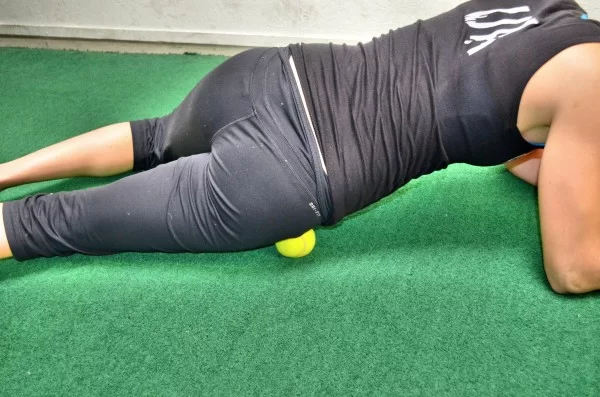
b) Glute medius/TFL (Left side)
Instructions:
Place a massage ball directly on the left Glute medius/Tensor fascia latae.
Apply your body weight on top of the ball.
Roll your body over the entire length of the muscle.
Aim for 1 minute.
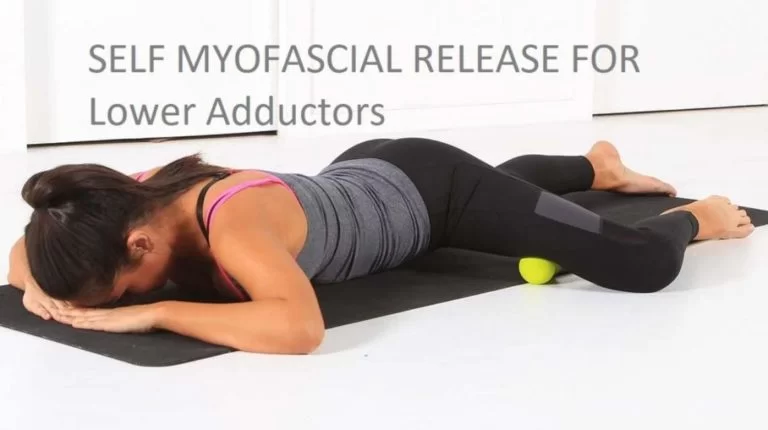
c) Adductors (Right side)
Instructions:
Place a foam roller directly underneath the Right Adductors.
Apply the weight of your right leg on top of the foam roller.
Make sure to cover the entire length of the muscle.
Aim for 1 minute.
Stretches:
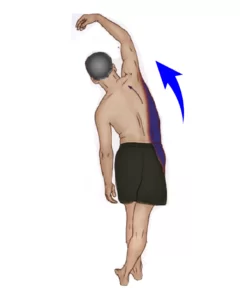
a) Quadratus Lumborum/Obliques (Right side)
Instructions:
Start with your feet wide apart with your left foot turned out to the side.
With arms outstretched, start to bend all the way to your left side.
Reach your upper arm as far to the left as possible.
Keep your body in line with your left leg.
Do not rotate your body.
Keep your legs fairly straight.
Aim to feel a stretch on the right side of your body.
Hold for 30 seconds.
b) Glute medius (Left side)
Instructions:
Assume the position as above with the left leg crossed over the right leg.
Sit up tall and arch your back.
Pull the left knee up towards your right shoulder.
Rotate your torso towards the left knee.
Aim to feel a stretch on the outer left hip.
Hold for 1 minute.
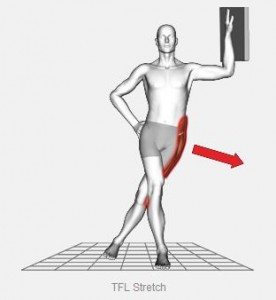
c) Tensor fascia latae (Left side)
Instructions:
Assume the lunge position with your left leg at the back.
Maintain a narrow stance.
Keep both of your feet in line with each other.
Lunge forwards.
Rotate your pelvis backwards.
“Tuck your tailbone underneath you”
Lean towards your right side.
Aim to feel a stretch on the upper side of the left leg.
Hold for 1 minute.
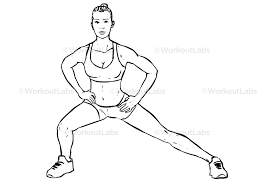
d) Adductors (Right side)
Instructions:
Perform a side lunge towards the left side.
Aim to feel a deep stretch in the inner right thigh region.
Hold each stretch for 1 minute.
Activation Exercises
a) Hip hitch (Left side)
Muscle: Quadratus Lumborum
Instructions:
Sit tall on a chair.
Lean slightly towards the right side.
(Feel free to use your hands to balance if required.)
Lift your left buttock off the chair.
Aim to feel your left lower back muscles activate.
Hold contraction for 3-5 seconds.
Repeat 10 times.
b) Leg lift (Right side)
Muscle: Glute medius/TFL
Instructions:
Lie on your left side with your upper leg straight.
Elongate your right leg by pushing your foot away from you.
Lift your right leg.
Keep your pelvis completely still.
Only your leg should be moving.
Aim to feel your right hip muscle activating.
Hold the top position for 3-5 seconds.
Repeat 10 times.
Progression: Apply a resistance band between the ankles.

c) Leg lift (Left side)
Muscle: Adductors
Instructions:
Lie on your left side with your upper leg bent forward and bottom leg straight.
Lift your left leg up towards the ceiling.
Keep your pelvis completely still.
Only your leg should be moving.
Make sure that you do not rotate the pelvis.
Aim to feel your left inner thigh activate.
Hold the top position for 3-5 seconds.
Repeat 10 times.
Progression: Apply a weight to the left ankle.
Strengthening Exercises
The aim of the following exercises is to get all of the involved muscles on both legs to work together to achieve a more neutral pelvis.
a) 90/90 Hip shift
Instructions:
Lie on the floor.
Place your feet on the wall with your hips and knees bent at 90 degrees.
Dig your feels into the wall and lift your tail bone off the floor.
Keep your back flat on the ground.
Without moving your feet:
push out your right knee forward
pull in your left knee towards you.
Feel the tension in your left inner thigh and right outer thigh.
Hold for 10-15 seconds.
Repeat 3 times.
Progression: Hold for a longer period.
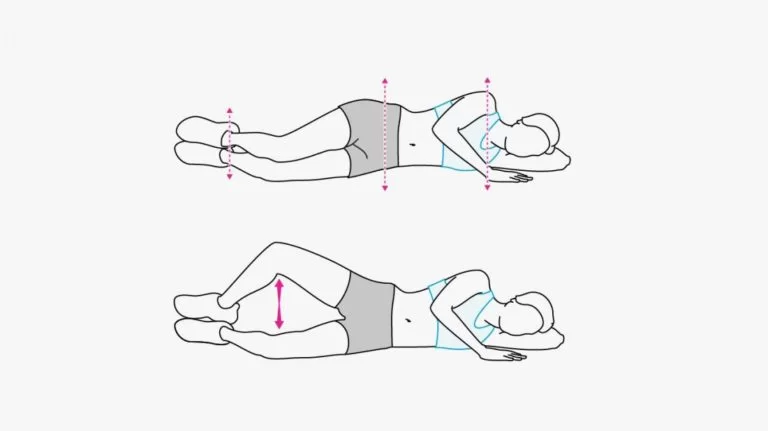
b) Knee to Knee (Right side up)
Instructions:
Lie on your left side with both knees bent.
Lift up your right knee.
Whilst keeping this position, lift up your left knee towards right knee.
Hold for 5-10 seconds.
Repeat 10 times.
Progression: Hold for a longer period.
c) Side wall push (Stand on the Right side)
Instructions:
Lift your left hip to ~90 degrees and place the side of that leg against a wall.
Bend your planted leg to ~10 degrees.
Push the lifted leg into the wall.
Aim to feel the side of your right hip engage.
Hold this position for 5-10 seconds.
Repeat 10 times.
Progression: Hold for a longer period.
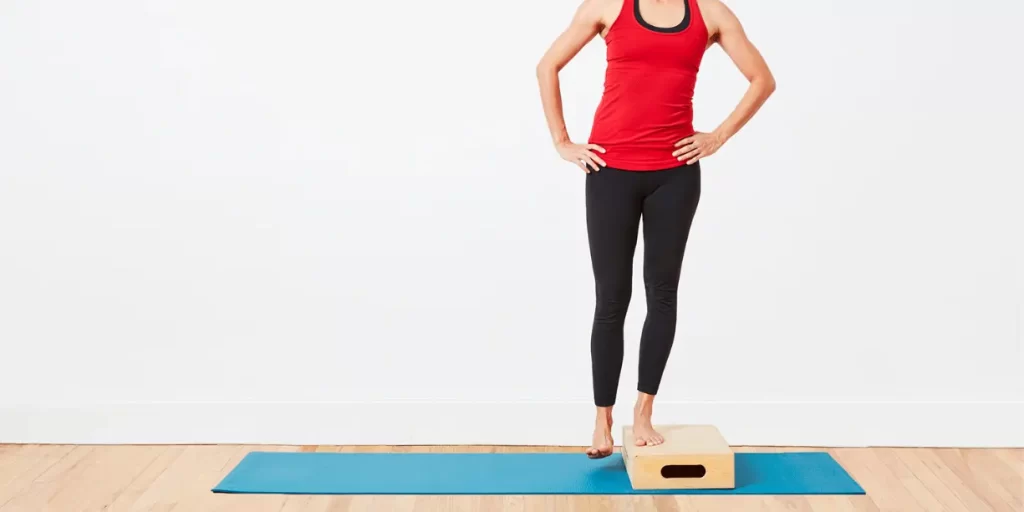
c) Hip hitch (Standing) (Right side on step)
Instructions:
Stand sideways with your right leg on the edge of a step.
Keep your stance leg fairly straight throughout the exercise.
Movement:
Start: Drop your left leg as low as possible.
Finish: Lift your left hip as high as possible.
Repeat 20 times.
Progression: Go slower
d) Crab walk
Instructions:
Set up a resistance band as shown above.
Pull the band with both of your arms to increase tension.
Proceed to take ~1cm side steps with each leg over a 1-meter distance.
Keep your pelvis level through the exercise.
Aim to feel the side of your hips activating.
Continue for 1 minute.
Progression: Use more resistance in the band.
e) Single leg tap (Stand on the Right side)
Instructions:
Place your hands on your waist to make sure your pelvis is level.
Stand on your right leg
Keep it bent at ~15 degrees.
Maintain your balance!
Whilst keeping your pelvis level, proceed to reach and gently tap your left leg on the floor as far as you can.
Cover every direction. (Front/back/side/diagonal)
Imagine you’re patting an ant’s head with your foot and Be gentle.
Continue for 1 minute.
Progression: Reach further and/or Tap your foot softer.
f) Step down/up (Right side on step)
Instructions:
Stand on your right leg on the edge of a step.
Maintain a level pelvis throughout the exercise.
Slowly lower your left leg down towards the floor.
The right knee should bend as you do this.
Do not touch the ground.
Let it hover ~1cm above the ground.
Return to the starting position.
Repeat 10 times.
Progression: Go slower.
g) Side plank with upper leg lift (Right side up)
Instructions:
Assume the side plank position with the left side down.
Ensure that you keep your left lower torso muscles engaged.
Think about using the muscles that would crunch your body towards the left.
Elongate your right leg by pushing it away from you.
(This should pull the right side of the pelvis towards your feet)
Whilst keeping your pelvis still, lift up your right leg.
Make sure you feel your right glute muscle contract.
Hold this position for as long as you can maintain good technique.
Improve Your Function
It is important to practice maintaining a level pelvis as you go throughout your normal movement throughout the day.
a) Sitting:
- Distribute your weight evenly between both buttocks.
- Do not lean to one side.
b) Standing:
- Distribute your weight evenly between both feet.
- Do not lean to one side!
- If you are not sure if you stand evenly, you can check it by standing on 2 separate scales (1 for each leg).
- If you evenly distribute your weight, both readings should be the same.
- A simple way you can monitor your pelvis position is by placing your hands on your hips.
- Pay particular attention to your uneven hips in the following:
- Walking
- Stepping up/down stairs
- Lunging
- Squatting
- Consider purchasing a kneeling chair – Using a kneeling chair forces the body to maintain a straight spine. Kneeling chairs also can help stretch tight hip flexors.
- Swap your sitting desk for a standing one – Sitting for long periods of time not only causes the hip flexors to contract, but it can also impede blood flow to the muscles of the lower body. If your work requires a significant amount of time at a desk, consider switching to a standing workstation.
- Use a chair with lumbar support – An office chair with lumbar support will protect the delicate structures of the lower back and promote better posture overall. If your chair doesn’t have a lumbar support, consider using a lumbar support cushion.
Fixing Bad Habit
In addition to exercises, it is essential that you address the following bad habits that may be predisposing you to have a lateral pelvic tilt in the first place.
Common habits associated:
- Favoring one leg when standing
- Leaning to one side whilst sitting/driving
- Always sleeping on the same side
- (Tip: Try placing a small rolled-up towel under the waist crease to prevent the pelvis from tilting.)
- Holding baby on the side of the hip
- If you notice you have a habit of tilting one hip up, then you will need to correct this whenever you find it occurring.
How to Prevent Lateral Pelvic Tilt?
Developing good habits, keeping your posture straight, and taking care of any muscular imbalances or structural problems that might be causing your lateral pelvic tilt will all help prevent the disease. The following advice can assist in preventing lateral pelvic tilt:
Keep Your Posture Correct:
Take note of your posture when you stand, sit, and walk.
Maintain a back-and-down posture, and position your ears in line with your shoulders.
When sitting for long periods of time, try not to cross your legs.
Well-Composed Strength Training:
Include exercises in your strength training regimen that focus on the hip-related muscles, such as the adductors and abductors.
Stabilizing the pelvis can also be achieved by strengthening the core muscles.
Regular Stretching:
To keep your hips, hamstrings, and lower back flexible, do stretching exercises on a regular basis.
Concentrate on performing stretches that target tense muscles that could be causing pelvic tilt.
Even Weight Distribution:
While standing or walking, equally distribute your weight across both legs.
Stay away from preferring one leg over the other since this might lead to imbalances in the muscles.
Proper Ergonomics:
Make sure the ergonomics of your workspace encourage proper posture.
To keep your spine in a neutral position, raise the desk and chair.
Evaluation of Leg Length Discrepancy:
Speak with a healthcare provider to diagnose and treat any suspected leg length disparity.
Regular Physical Activity:
To increase general muscle strength and flexibility, get frequent exercise.
Incorporate exercises like yoga, swimming, and walking into your schedule.
Pay Attention to Your Body:
If you have any pain or discomfort in your hips, pelvis, or lower back, pay attention to it.
Consult a medical expert if you observe asymmetry or if your symptoms are ongoing.
Maintain a Healthy Lifestyle:
Overall musculoskeletal health can be supported by leading a healthy lifestyle that includes eating a balanced diet and staying well hydrated.
Complication
If lateral pelvic tilt is not treated, it might result in musculoskeletal problems and other difficulties. The following are a few possible side effects of lateral pelvic tilt:
Muscle Imbalances:
Muscle imbalances resulting in certain muscles becoming weak and others being taut are frequently caused by lateral pelvic tilt. The pelvis and associated structures may become less stable and functional as a result of this imbalance.
Back Pain:
A common consequence is soreness in the lower back. An increased amount of tension on the lumbar spine due to pelvic misalignment can result in pain and discomfort.
Hip Pain:
The hip joints may be impacted by the changing pelvic posture, possibly leading to pain and inflammation. Range of motion and daily activities may be impacted by this.
Leg Length Discrepancy Symptoms:
In certain cases, lateral pelvic tilt is linked to the feeling of a leg length disparity, which can result in symptoms like discomfort and an uneven gait.
Sciatica:
Lateral pelvic tilt may occasionally be a factor in sciatic nerve compression, which results in sciatica. This may result in tingling, discomfort, and numbness that travels down the back of the leg.
Scoliosis or curvature of the spine:
Steady lateral pelvic tilt has the potential to cause or worsen spine curvature, including scoliosis. This may also have an effect on spinal alignment and posture.
Reduced Mobility and Flexibility:
Lateral pelvic tilt might lessen flexibility and impair regular movement patterns. This mobility restriction might interfere with day-to-day tasks and cause compensatory motions in other body areas.
Impaired Balance:
A lateral pelvic tilt can cause an uneven distribution of weight, which can impair balance and raise the risk of falls and injuries.
Chronic Pain and Discomfort:
If left untreated, the lateral pelvic tilt’s continuous strain on the muscles and joints can lead to chronic pain and discomfort, which can lower the person’s quality of life.
Impact on Athletic Performance:
Athletes who have lateral pelvic tilt may see a decline in performance as a result of modified biomechanics and decreased movement efficiency.
It’s crucial to remember that not everyone with lateral pelvic tilt will have all of these problems and that the severity of symptoms might vary from person to person.
Prognosis
The prognosis for lateral pelvic tilt varies according to the patient’s commitment to treatment, underlying causes, and timely intervention. A proactive approach combined with focused therapies can help many people achieve improved pelvic alignment and reduce related symptoms.
Conclusion
Lateral pelvic tilt is a misalignment of the pelvis, causing one side to be higher than the other. It may be caused by biomechanical difficulties, muscular imbalances, or variations in leg length, which can cause discomfort and poor posture.
In order to address the underlying causes, treatment options include targeted workouts, physical therapy, and orthopedic procedures in certain circumstances. To avoid long-term issues, early intervention is crucial. It is advised to speak with a healthcare provider for an evaluation and a customized treatment strategy.
FAQ
What causes a lateral pelvic tilt?
We will examine two of the most frequent causes of lateral pelvic tilting: structural issues brought on by a leg length disparity and functional changes brought on by muscular tightness. In cases when there is unilateral hypertonicity or spasm in the low back muscles, the pelvis is prone to tilt laterally.
How do you fix a sideways pelvic tilt?
To fix a sideways pelvic tilt:
To help correct a lateral pelvic tilt, do these exercises at home.
Leg raises in reverse. Your gluteus muscles will get stronger and your hip mobility will increase with this workout.
Reverse leg lifts while standing. Your gluteus muscles will get stronger and your balance will get better with this exercise.
Hike your hips
Clamshell.
Adduction of the hips.
What is lateral shift pelvic tilt?
Your pelvis becomes misaligned because of the larger right diaphragm pressing on it, which results in lateral pelvic tilt. Our body’s center of mass moves to the right as the pull of the right diaphragm eventually overwhelms the pull of its left counterpart.
How do you detect lateral pelvic tilt?
Lateral pelvic tilt can be detected by assessing the alignment of the pelvis in relation to the horizontal plane. Common methods include observing the levelness of the iliac crests, assessing the position of the ASIS (anterior superior iliac spine), and using tools like a leveling device or plumb line to measure pelvic symmetry.
Is lateral pelvic tilt normal?
When the pelvis moves so much from side to side that one hip is higher than the other, it is referred to as a lateral pelvic tilt. Unilateral muscular imbalances develop as a result, affecting the entire body. This tilt is frequently caused by the erector spinae muscle group, which is why it should always be treated in this case.
Can pelvic tilt be corrected?
Physical therapy, which mostly consists of muscle-strengthening exercises, stretches, and massages, can usually cure a pelvic tilt. Shoe inserts could be recommended to allow for more comfortable movement in situations when one leg is longer than the other. To control pain, medications may also be administered.
How can I realign my pelvis at home?
Squats: While maintaining a neutral pelvis, drop yourself into a squat by standing with your feet shoulder-width apart and contracting your abs. Squeeze your glutes to push your pelvis forward and stand back up, paying careful attention to maintain your pelvis in position throughout. Do this fifteen to twenty times.
Can lateral pelvic tilt cause sciatica?
Pelvic tilt, however, is a frequently ignored source of sciatic pain.

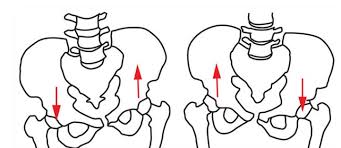
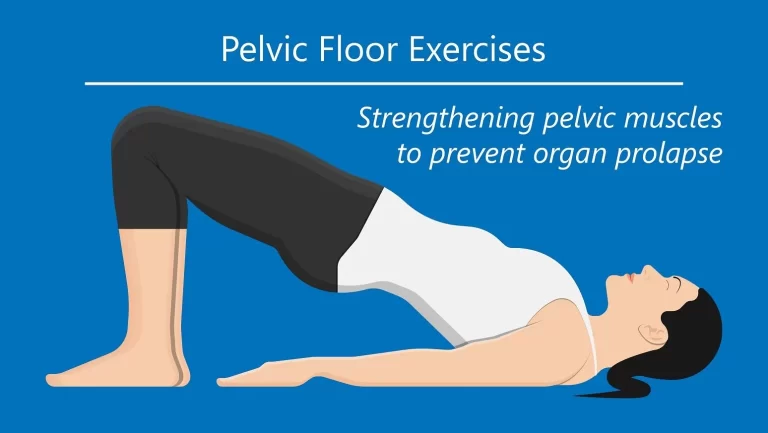
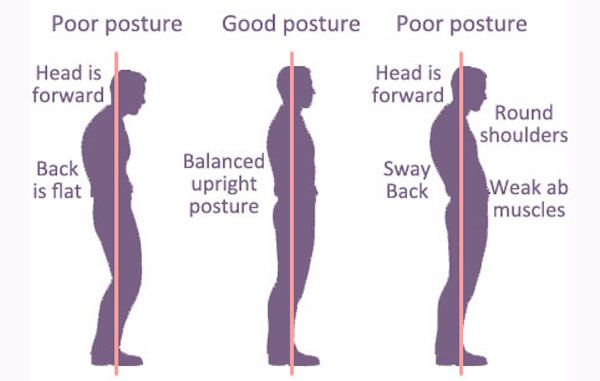

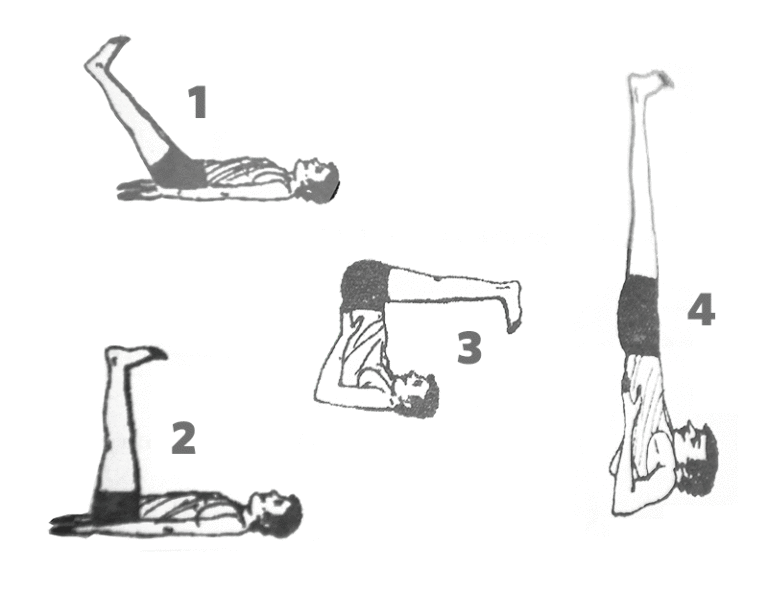
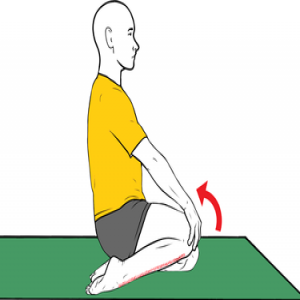
Hi
I have uneven hips since birth and I even limp because of that the diff between both legs are 1.5 percent can it be treated
Yes, You Required Physiotherapist consultation near to you.
Yes, you are right, these exercises are for Left Pelvic Tilt
Exercise plays a crucial role in correcting Pelvic tilt naturally!